______________________________________________________________
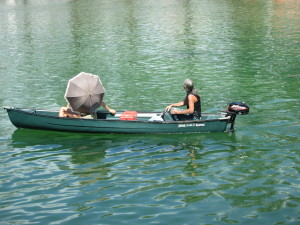
______________________________________________________________________
Camping at Brunswick Heads in the 1960’s:
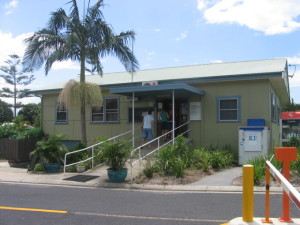
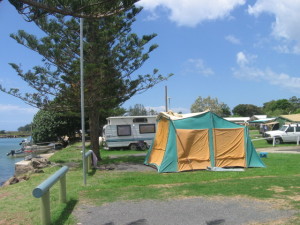
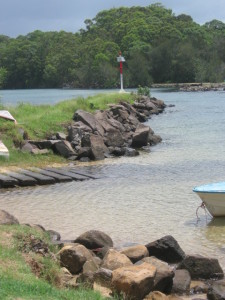

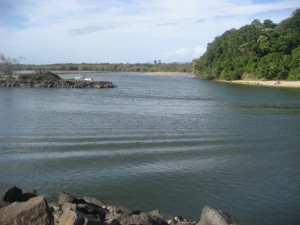
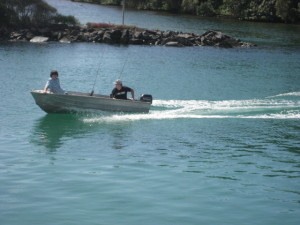
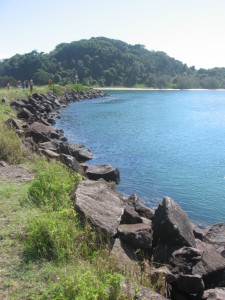
We would often camp at Brunswick at the Massey Green Caravan Park in a tent in the Christmas holidays in the 1960’s. In the early 1960’s there were just bare sandbanks along the entire river to the estuary bar leading to the open ocean. The trawler Fleet would be moored at a series of wooden posts with a wooden ramps. When the tide came in, the ramps would be cut off by deep water behind the ramps. Groups of teenagers would fish with handlines off the ramps and off the backs of the trawlers. You would catch bream, whiting and the occasional flathead.
I remember fishing with handlines with Dad along the sandbars going out towards the bar. In the early 1960’s that all changed. The local council began to build basalt boulder walls all along the river extending from a purpose built trawler harbour to walls that extended the bar out beyond the beach on the north and south side of the river. This was to give the trawlers a safe passage at any tide … to exit of or enter river. It was otherwise very dangerous to exit of or enter river on a lower tide. The trawlers could easily capsize with the rough water. See the photographs above …. one of many along the whole river.
The Brunswick River has clean green water and a tidal rock wall. The upper channel goes up to New Brighton north of Brunswick Heads. The rock wall shown was a place of spearfishing in the mid 1960’s with a homemade spear gun. This was a wooden gun device and homemade trigger and a spear made from a length of thin reinforcing rod.
___________________________________________________________________________________
This Brunswick Community Shed had many associations: Community Housy Housy is one from the past ….
Now it is an all weather picnic shed.
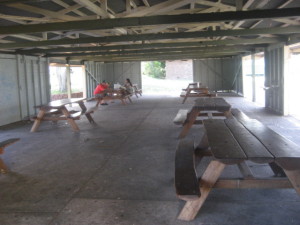
______________________________________________________________________
The Brunswick River Estuary:
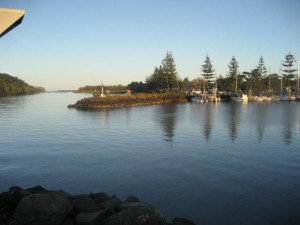
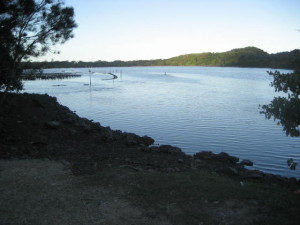
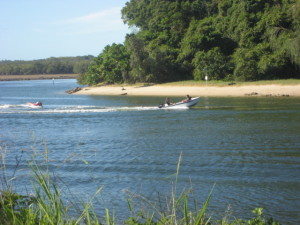
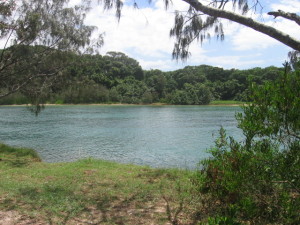
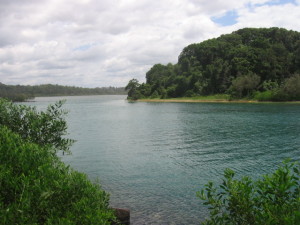
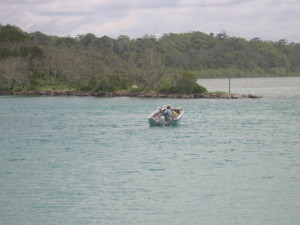
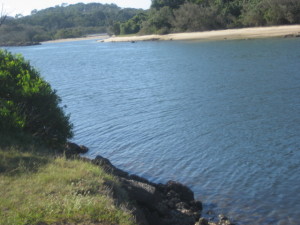
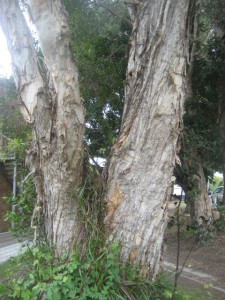
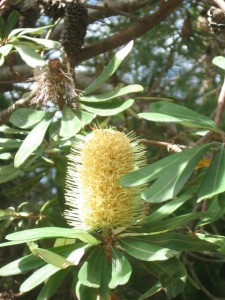
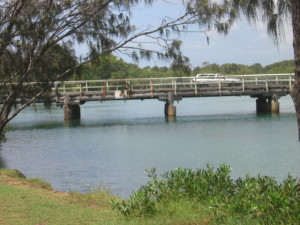
______________________________________________________________________
The Brunswick River with wall that extended the bar out beyond the beach:
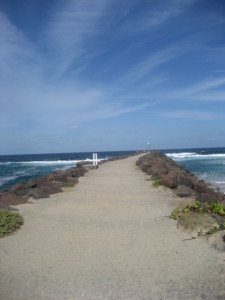
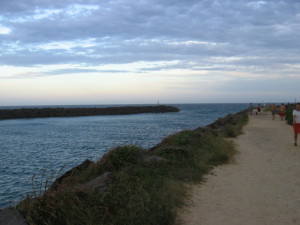
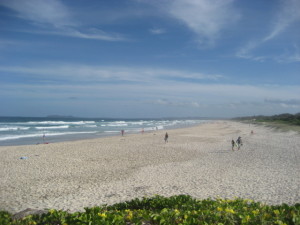
______________________________________________________________________
The Brunswick Torakina Surf Beach:
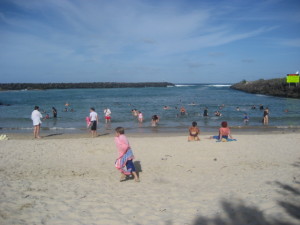
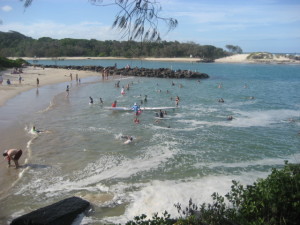
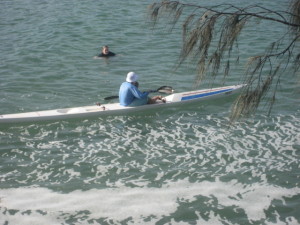
______________________________________________________________________
The Brunswick Surf Beach:
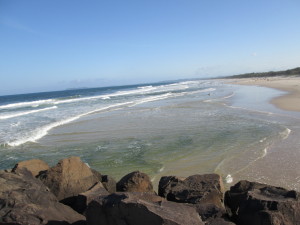

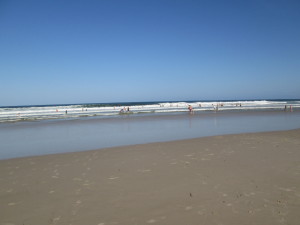
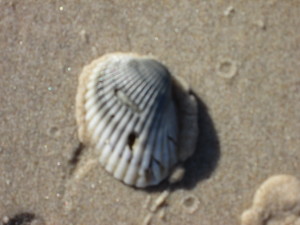
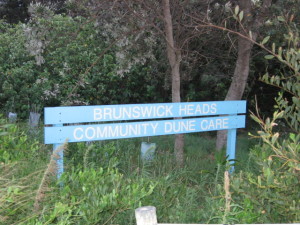
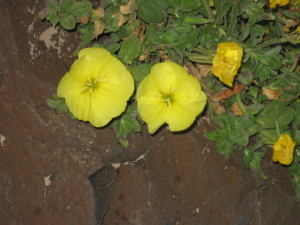
______________________________________________________________________
The Pub of Brunswick Heads:
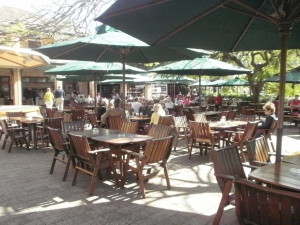
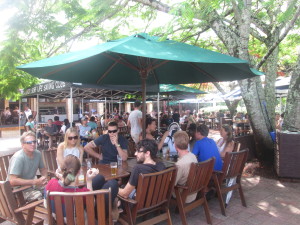
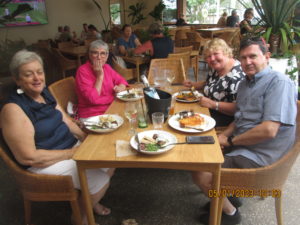
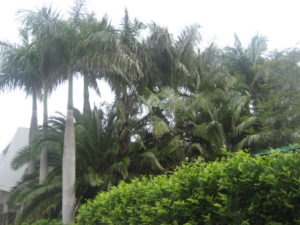
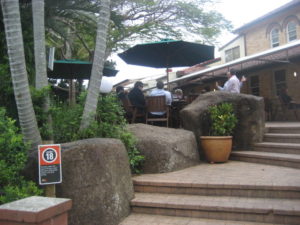
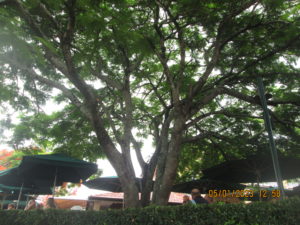
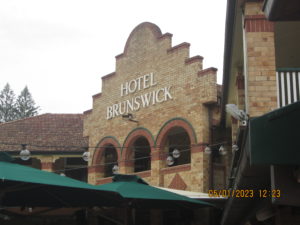
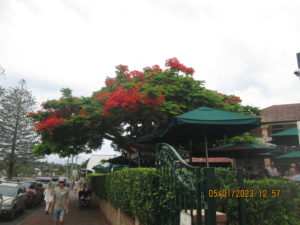
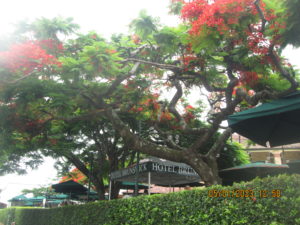
______________________________________________________________________
The Town of Brunswick Heads:
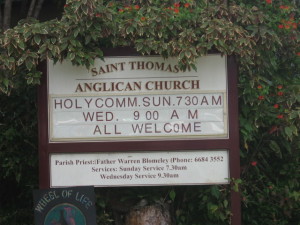
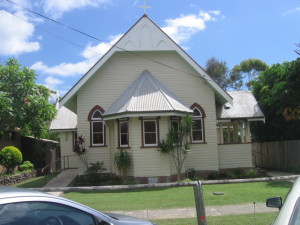
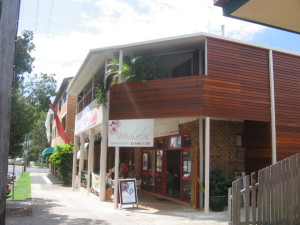
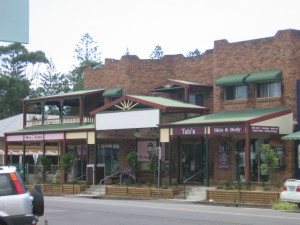
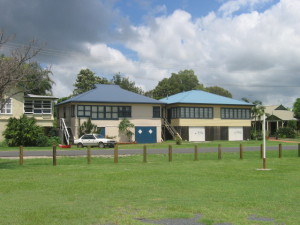
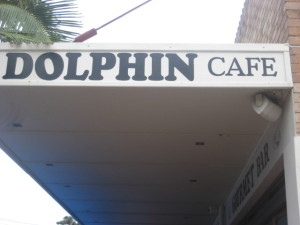
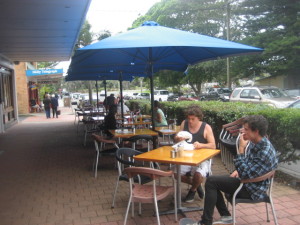
______________________________________________________________________
The Brunswick Heads Nature Reserve:
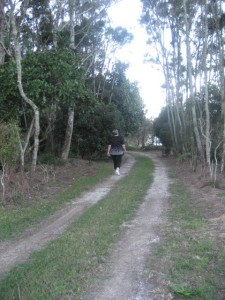
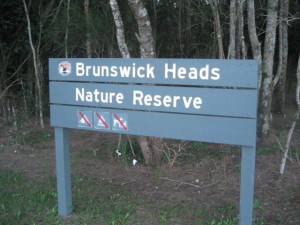
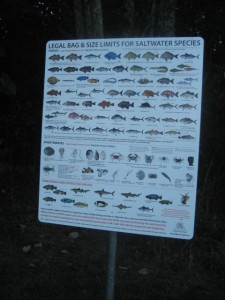

______________________________________________________________________
The Brunswick Heads Boat Harbour:
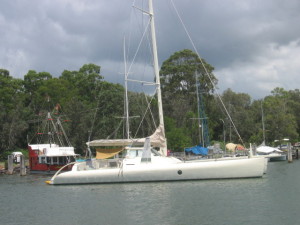
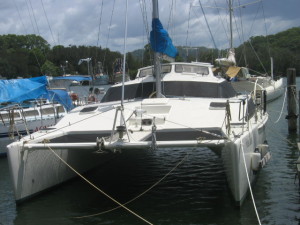

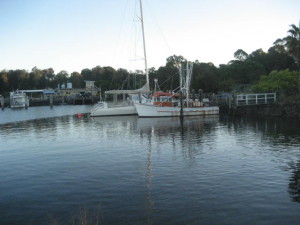
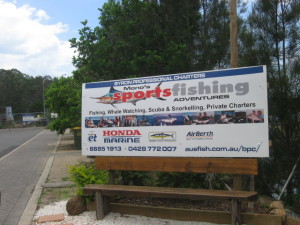
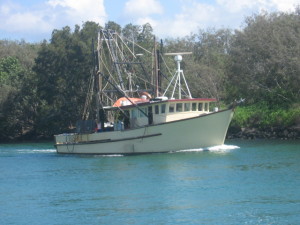
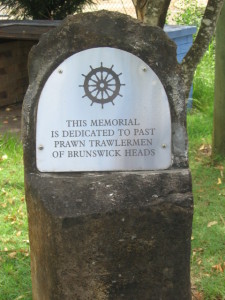
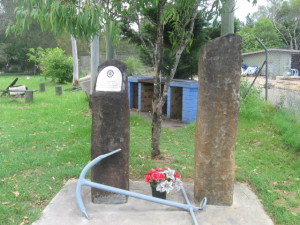
In the early 1960’s there were just bare sandbanks along the entire river to the estuary bar leading to the open ocean. The trawler Fleet would be moored at a series of wooden posts with a wooden ramps. When the tide came in, the ramps would be cut off by deep water behind the ramps. Groups of teenagers would fish with handlines off the ramps and off the backs of the trawlers. You could catch bream, whiting and the occasional flathead.
I remember fishing with handlines with Dad along the sandbars going out towards the bar. In the early 1960’s that all changed. The local council began to build basalt boulder walls all along the river from a purpose built trawler harbour to walls that extended the bar out beyond the beach on the north and south side of the river. This was to give the trawlers a safe passage at any tide … to exit of or enter river. It was otherwise very dangerous to exit of or enter river on a lower tide. The trawlers could easily capsize with the rough water. See the photographs above.
______________________________________________________________________
Saturday Nights At Brunswick Heads: Often there would be communal Saturday night music concerts in the early 1960’s in the park where the footbridge goes over to the surf beach. We would go down as a family to hear the concert. One the songs was ‘What A Lovely Bunch Of Coconuts’ was a favourite. See the photographs above.
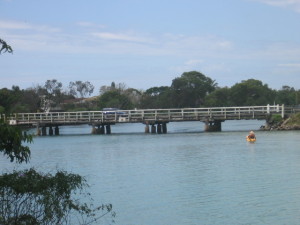
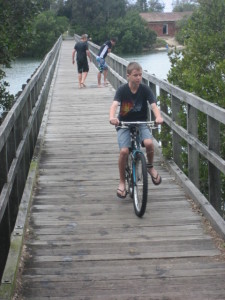
______________________________________________________________________
Forest Beside The River …. Brunswick Heads Nature Reserve
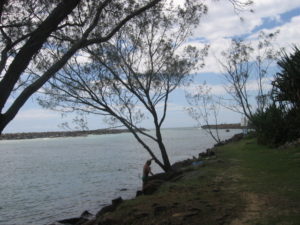
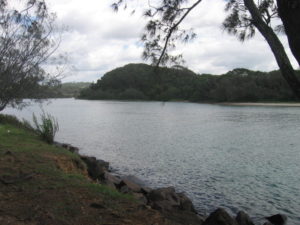
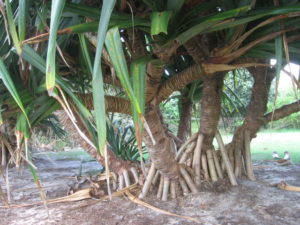
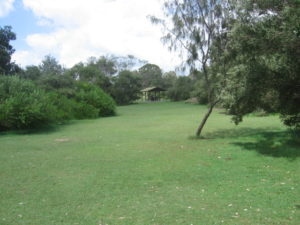
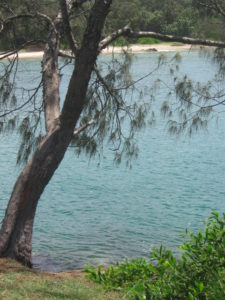
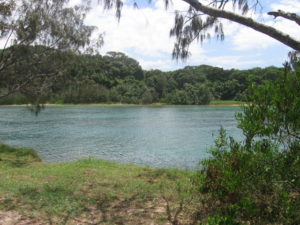
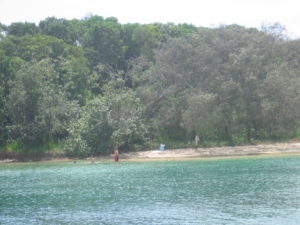
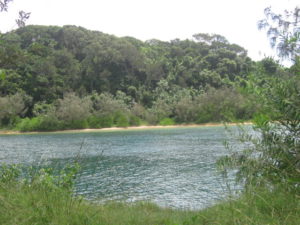
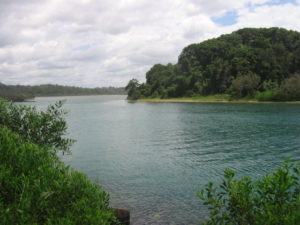
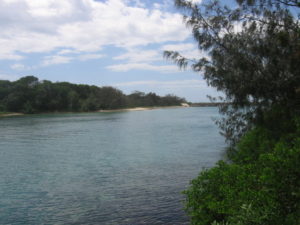
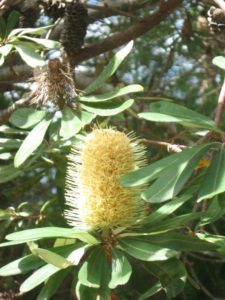
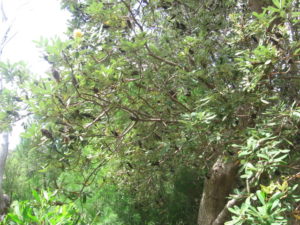
______________________________________________________________________
The Port of Brunswick from ‘When the Curlews Called’ …. A Collection of Short Historical Stories Photographs and Poems by Frank Mills 2005.
______________________________________________________________________
The original inhabitants of the Brunswick Valley were Aboriginal people from the Minjangbal and Durrungbil Tribes. The Minjangbal people lived in the New Brighton and Ocean Shores areas where seafood and an abundance of wildlife provided a constant food supply. The Durrungbil Tribe lived at Brunswick Heads. These people were strong and healthy due to the plentiful food supply. They became known to the cedar-getters and continued to live in the area for many years after European settlement began.
When the pioneers arrived by sailing ships at Brunswick Heads in 1849, the boat was the only way for them to receive supplies or rations, as they were called in the early days. The ocean was the highway and the only link with the outside world for about 40 years. The pioneers of the Brunswick Valley relied heavily on the daring sailors, who in their shallow draught vessels, sailed into the port of Brunswick. At times they anchored off shore with their cargo of essential supplies, in order to sustain the lives of the pioneers. Unfortunately, when crossing the Brunswick bar many of these courageous sailors paid with their lives, and their bodies lie buried in unmarked graves at Harry’s Hill and the Brunswick Heads Nature Reserve.
This port was the delivery point where all goods and supplies were unloaded for the Brunswick Valley, south to Byron Bay and north to Burringbar. The closest other ports were Ballina and Tweed Heads. These ports to the north and south were of little use to the settlers, because there were no road or rail links to them. The Byron Bay Jetty was opened in 1888 and the railway line to Murwillumbah in 1894. After these two important new transport links were developed, the port of Brunswick lost its significance as the only local access point to the ocean.
Captain Rous first named the Brunswick River after Queen Caroline of Brunswick (a Duchy in Prussia) in 1828. In July 1840, Robert Dixon, the Government Surveyor, visited Brunswick from Moreton Bay. His survey party was equipped with saddle horses and a whaleboat. While Robert Dixon was at Brunswick Heads, he sighted the “Letitia” off Cape Byron. It was under the command of Captain William Scott, who was searching for cedar that was easily accessible. After the “Letitia” had sailed north, Dixon’s whaleboat was wrecked on the rocks at the Brunswick bar.
Captain McGregor was the first ship’s pilot of Cooloon (1870-1896) later known as Tweed Heads. He assisted Captain Simpson, (the Brunswick pilot) with his tugboat in emergencies. When called upon, he would dispatch his Tweed tug to help the vessels that had run aground on the shallow Brunswick bar with their cargoes of cedar. (McGregor and Cooloon by W. D. Keats 1999).
His pilot station was on Harry’s Hill. Simpson’s Creek, the south arm of the Brunswick River is named after Captain Simpson. In fact, Brunswick Heads was originally known as Simpson Town for quite a number of years.
Another vessel of importance was the “Endeavour” a screw steamer of 115 tons, which was a supply vessel for Brunswick Heads. Unfortunately, it was wrecked here in February 1892. The paddle wheelers also visited Brunswick. The combined sailing and paddle wheeler, the “Arakoon” of 77 tons had two masts and sailed out of Brunswick on 17th. September 1874. There were many schooners crossing the bar, prior to the arrival of the paddle wheelers.
The iron S.S. “Brunswick” also traded to and from the Brunswick port. It was a 174-ton ketch, built in 1883 at Balmain. There are conflicting reports about where the ketch “Brunswick” was wrecked. One states it was lost at Brunswick Heads and the other, on the Manning River bar.
Many ships were wrecked crossing the bar, and along the nearby coast. One wreck, which was well recorded by Fred Wareham and S.J. Dening was the sailing ship “Agnes”.
The “Agnes” was the only sailing ship to survive gale force winds, out of five sailing ships sheltering in Byron Bay on July 16 1889. It was lifted high and dry on to the beach and fortunately, was able to be re-floated. Fred Wareham reported in his diary on 12th March 1890 that the schooner “Agnes” had foundered north of Brunswick Heads and all hands were lost. Three bodies were washed ashore. S.J. Dening recorded an incident concerning the “Agnes”. “There was a violent gale near Brunswick Heads. Next day a man named James Mills (my great-uncle) was walking along the beach, when he came across a bottle containing a message. The message read: Sunday 9th March, schooner “Agnes”, bound from Sydney to Tweed Heads, 13 days out. Captain Power, Mate, Cook, three hands and two working passengers on lee shore – blowing an Easterly gale”.
“James Mills came across two of the bodies from the “Agnes”. He walked from Brunswick Heads to Byron Bay and reported the matter to Constable Andrews, who accompanied by a Mr. Brown rode to the scene. Altogether four bodies were found. Mr. Brown made four coffins and the bodies were buried at Brunswick Heads. Round Captain Power’s waist was a canvas belt containing the ship’s papers and other documents.” This incident was recorded in “Time and Tide” by Maurie Ryan, p.145.
After the Brunswick bar had claimed so many lives and vessels, the Captains and the ships’ owners were reluctant to have their boats cross the Brunswick’s treacherous river entrance.
To save vessels having to cross the shallow bar of the Brunswick River, James Mills introduced what was known as “surfing” the cedar. This method involved the bullock teams hauling the cedar as far as possible into the surf. Various methods were then used to get the timber out to the vessels anchored outside the breakers. One way was for the ship’s whaleboat’s crew to attach ropes to the logs, which were then secured to the ship’s winch. The ship would haul them alongside for loading. However, this method could only be used when the ocean was calm, because the ships’ derricks were required to lift the logs from the surf on to the deck.
Another innovative way was also used by John G. Mills (James Mills’ younger brother) to off load his stock, when the boat was anchored outside the breakers and as near as possible to the shore at Brunswick Heads. The livestock were lowered into the water with barrels attached, to assist them to float or swim through the surf to the beach.
(On page 16 is an original Shipping Document of 1874 from the “Storm King”, which carried cedar to Sydney for Charles Jarrett. He was a shipping agent of Ballina, who organised the transportation of the cedar logs from Brunswick Heads).
______________________________________________________________________
The Brunswick Bell Ringers.
The repairing and building of boats were very important to Brunswick Heads during its early years. This industry developed because there were a variety of suitable rainforest timbers readily available up river. Some of the local timbers were beech, bolleygum, pine, cedar, coachwood and rosewood. All of these species were sought- after for boat building and boat maintenance. However, when the timber was cut out the boat building at Brunswick Heads finished too.
One of the many vessels entering the Brunswick port was the “Emma” of 52 tons, which was built at Brunswick Heads in 1851.
Those were the days when the only power available to haul the timber logs from the bush to the river was the bullocks and horses. The logs arriving with the tide at Brunswick Heads were again hauled from the river by the bullocks or horses, to the sawpits near the river’s edge at Brunswick Heads. The boat builders had to rely on their sturdy animals’ power for all their requirements. Both the bullocks and horses had to be turned loose to graze, and their drivers had to be able to find them. The method used to locate the bullocks, in particular, was the bullock bell. They placed a bell on a strap around their necks, which produced a chime whenever they moved. The sound the bells gave off was what was known as the “Brunswick Chimes” and the local newspaper was called the “Brunswick Chimes”. Published in this paper in 1914 was the following poem written by one of the pioneers, which beautifully describes the bullock bells and the memories the bells brought back to the author.
______________________________________________________________________
Our Poet’s Corner.
(By a Pioneer).
Those Brunswick bells, those Brunswick bells,
How many a tale their music tells;
Of axe and saw and that wild time
When first I heard your jangling chimes.
`Twas then was heard the bullock bells
While drinking tea at noontide spells,
While beef and damper was the fare
Of those who wrought the cedar there.
`Twas rum and oysters took their place
As evening shadows drew on apace;
Or bream and whiting from the sea
Or for change `twas wallaby.
Those jolly times have passed away
And many a heart that then was gay
Within the tomb now darkly dwells
And hears no more those bullock bells.
______________________________________________________________________
An early report on the Brunswick Valley potential by
Walter Scott Campbell 1844-1935.
The Mitchell Library has Walter Scott Campbell’s report, which throws some light on the past history of the district. W.S. Campbell, Historian and agricultural expert was born on the eleventh of June 1844. In 1887, he reported extensively on agricultural conditions in N.S.W. He was appointed Director of Agriculture, and was placed in charge of forests at about this time and held both positions until 1909. As a man he was noted for his remarkable physique and retentive memory, both of which remained with him to the last. His death was in his 92nd. Year (Australian Encyclopaedia, book 2, pages 246/247.)
Surveyor W.S. Campbell’s detailed account of the Northern Rivers’ agricultural potential follows Sir Thomas Ewing’s report to Parliament in 1887. Extracts from the Report on the Richmond River District by W.S. Campbell were under instructions from the Hon. Jas. Fletcher, Minister of Mines. These extracts are portions of the report referring particularly to the production of the district. The other portions refer to the examination of sites with a view to the establishment of an experimental or model farm in the district.
The report states: The Brunswick River drains a very small area in comparison with that drained by the Richmond or even the Tweed, but the soil within this area, with the exception of a sandy strip along the coast, is of excellent quality and wonderfully productive. The settlers, at present, produce little or nothing beyond what is required for local consumption, and must suffer considerable hardship in consequence of the want of roads, and an outlet for produce. The river is only navigable for very small craft, with an awkward bar at the mouth.
The inhabitants are looking forward with great hopes to the completion of the Byron Bay jetty, and the proposed railway; no doubt the jetty alone will make a vast improvement in the district. Produce will probably be brought to this jetty from within a few miles of the Tweed, as well as from a large portion of the area drained by the Richmond, but good roads are badly needed, not only here, but throughout the whole country. In this Brunswick district, I met settlers toiling along through the bush tracks, leading their horses up to the knees in slush, with a supply of provisions for their families strapped on the saddles.
The journey to the nearest store and back occupied a whole day. I can well understand their difficulties, as I was obliged to dismount at times and wade through this soft, boggy country, or crawl along tops of trees. This shows the difficulty of carting produce from many of the farms. A little butter is produced and sent into Ballina, a distance of about 25 miles, until lately, by packhorse – a keg of butter on one side of the horse, and a bag of soil on the other to balance.
John Mills, grandson of pioneer John George Mills, with his bullock team used in the Bi-Centennial bullock drive from Tweed Heads to Sydney in 1987.
______________________________________________________________________
Posted by Ken Aitken
1 comment:
Andrew Dawe said…
Ken,
I just came across your Brunswick Heads blog, following an interest in the wreck of the schooner “Agnes”.
One of the bodies that your great-uncle came across was that of my great-grandfather, Captain Power, the master of the Agnes. Fortunately, Captain Power, a native of Ireland, was able before his untimely death to found an Australian family. His son, William Steve (W.S.) Power, was my mother’s father. He had both a personal and professional interest in autos and racing, in particular Indian motorcycles. Some time in the 20’s he set a record of 2hrs and 20-odd minutes to ride an Indian from Toowoomba to Brisbane. All the roads were dirt then of course.
The racing heritage did not end there. W.S.’s son Brian, who also followed an auto-related career and founded the Power Auto dealership in Brisbane, used to race, mostly at the Lakeside circuit. W.S.’s other son Douglas, of Toowoomba’s “The Canvas Shop” had himself a son, Bob, who raced open-wheelers; and Bob’s son, Will, whose name you’ll probably recognise, is now clawing his way up the Indy Car League in the U.S.
A Power-ful legacy …
Thanks for contributing to Captain Power’s memory.
Kind regards,
Andrew Dawe
Montreal, Canada
______________________________________________________________________
